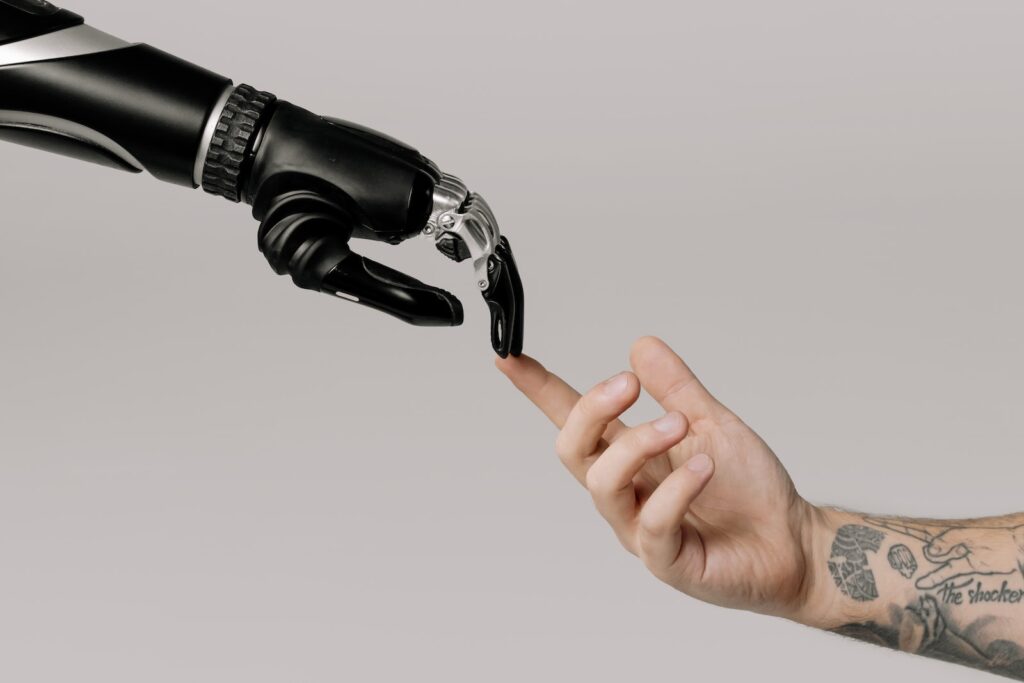Table of Contents
Introduction: What are Bionic Implants?
Bionic implants are artificial devices that can be surgically implanted into a person’s body to restore or enhance their physical capabilities. These advanced technologies have revolutionized the field of prosthetics, enabling individuals with physical disabilities to regain functionality and mobility.
Bionic implants use cutting-edge materials and electronics, including microprocessors and sensors, to mimic the functions of natural organs and limbs. They work by communicating directly with the nervous system, allowing individuals to control them using their thoughts or muscle movements.
Beyond prosthetics, bionic implants can also enhance our senses in ways we previously thought impossible. For instance, blind people can now see through retinal implant devices that convert light signals into electrical impulses sent directly to the brain. Similarly, those who have lost their hearing may benefit from cochlear implants that stimulate auditory nerves.
The development of bionic technology has had a profound impact on medicine as well as society at large. As researchers continue pushing boundaries in this field, we can expect even more exciting breakthroughs in enhancing human performance and improving quality of life for millions around the world.
How Bionic Implants Have Revolutionized Prosthetics
Bionic implants have completely revolutionized the field of prosthetics. Thanks to rapid advancements in technology, people who have lost limbs no longer need to rely on traditional prosthetic devices that can be uncomfortable and often limit mobility.
With bionic implants, amputees can regain not only their physical independence but also their mental well-being. The integration of advanced electronics and sophisticated control systems allows individuals with bionic limbs to perform tasks that would otherwise be impossible without assistance or immense effort.
What are Bionic Implants?
Bionic implants refer to sophisticated electronic devices surgically implanted into a patient’s body. These devices are typically designed for two purposes: – Replacing a missing limb – Enhancing an existing limb While prosthetic technology has been around for decades, it is only recently through technological advances that we’ve finally reached a point where the boundaries between biological and artificial limbs can merge seamlessly.
Different Types of Bionics
The types of bionics available today range from simple electric hands controlled by muscle movements in the residual limb, all the way up to full-featured mechanical arms capable of lifting heavy weights. In addition to replacing lost limbs, researchers have developed eye-based systems linked directly with cameras mounted on glasses as a means of restoring sight to blind patients.
The Advantages over Traditional Prosthetics
Surely one major advantage offered by bionics versus traditional prostheses is performance improvement. Electromechanical joints allow for smooth and natural flexibility when compared with rigid plastic or metal connections found in many traditional options.<\P>
Additionally, thanks to miniaturization advancements made possible by electronics, bionics can fit within the body itself. This integration makes movement more natural as well as occlusions or interference with clothing less likely.<\P>
Finally, advanced control systems for bionic arms and legs give patients greater precision over their movements while also providing feedback directly to nerve endings.
Conclusion
Bionic implants are a testament to how technology can improve the quality of life of millions around the world. They have opened up new opportunities for disabled individuals to achieve physical independence that was previously unimaginable. Although there are still hurdles in making this technology affordable and widely accessible, it is clear that we will continue seeing advancements in prosthetic technologies made possible through exciting research breakthroughs which has already begun changing lives dramatically.
Enhancing Senses through Bionic Implants: Seeing and Hearing Again
Bionic implants have revolutionized the lives of people with sensory impairments. Two senses that can now be enhanced through bionics are hearing and sight.
For those who are deaf or hard of hearing, cochlear implants offer a life-changing solution. These devices bypass damaged parts of the ear and directly stimulate the auditory nerve, allowing users to hear sound. Cochlear implants consist of an external device that captures sounds using a microphone and processes them into electrical signals which are then sent to an implanted array in the inner ear. From there, these signals travel to electrodes that stimulate the auditory nerve, creating sound sensations in the brain.
In recent years, visual prostheses such as retinal implants have become available for people with certain types of blindness. These devices work by essentially replacing some function of damaged cells in or around their respective organs – namely light-sensing photoreceptor cells on our retina when it comes to vision impairment – and converting incoming visual information into patterns sent wirelessly into electrode arrays surgically placed onto remaining healthy tissue; these electrodes then act sort-of-like relay stations picking up where broken cellular connections would normally take care-of-business along neural pathways heading towards brains’ interpretation centers behind our eyes themselves.
The Argus II Retinal Prosthesis System is one example which has been approved by regulatory bodies across various countries including US FDA Clears First Artificial-Intelligence Based Device For Diabetic Eye Disease Detection back in April 2021! Another commonly used device called Alpha IMS Retina Implant also seeks out photosensitivity via its “Vision Chip” technology crafted from silicon material only two-millimeters square (so tiny!) but able deliver “pixels,” what researchers call individual light-detecting elements capable making up images we perceive upon viewing them.
Overall, bionic sensors offer hope for those living with sensory impairments. While the technology still has a long way to go, there’s no denying that these devices have already provided incredible improvements to the quality of life for many people.
The Future of Bionic Implants: Advancements and Possibilities
Bionic implants have come a long way in recent years, but there is still so much potential for the future. As technology continues to advance, we can expect bionics to become even more sophisticated and capable of enhancing our lives in extraordinary ways.
One exciting possibility is the development of brain-computer interfaces (BCIs). These would allow individuals to control their bionic limbs or devices simply by thinking about what they want them to do. BCIs could also be used to help individuals with paralysis regain some of their mobility, as well as improve communication capabilities for those who are nonverbal.
Another area where bionics may make significant strides is in sensory enhancement. Researchers are working on developing implantable devices that can restore lost senses such as touch and smell. For example, someone with nerve damage who has lost the ability to feel pressure or temperature changes could potentially have these sensations restored through a bionic implant.
Beyond restoring lost senses, it’s also possible that bionics could enhance our existing abilities. Imagine having superhuman hearing or vision thanks to advanced implants that can pick up frequencies beyond what’s currently perceptible by humans. With enhanced senses like this, people would be able to experience the world around them in an entirely new way.
Of course, as with any emerging technology, there are ethical considerations surrounding the use of bionics. Issues such as privacy concerns related to BCIs and ensuring equitable access for all individuals will need careful consideration moving forward.
In conclusion,
while we’ve already seen amazing advancements made in prosthetics and sensory restoration through bionic implants thus far – from artificial limbs controlled by thoughts alone; cochlear implants allowing deaf people hear sound; retinal prosthesis helping blind people see again – there is no telling what the future holds. One thing we know for sure is that bionics will continue to transform and enhance our capabilities, pushing us closer towards a more integrated relationship with technology.
Challenges Facing the Adoption of Bionic Implants
Bionic implants have revolutionized prosthetics and enhanced senses, but their adoption is still met with significant challenges.
One of the main barriers to wider adoption of bionic implants is their cost. Although the technology has improved significantly over time, bionic implants are still prohibitively expensive for many people. This means that not everyone who could benefit from a bionic implant can actually afford one.
Another challenge facing the adoption of bionics is public perception. Many people are still skeptical about the effectiveness and safety of these devices. Some may see them as unnatural or invasive, while others may be concerned about cyber attacks or other security risks associated with bionic devices.
In addition to concerns over safety and costs, there are also regulatory hurdles that companies must navigate in order to bring new bionic products to market. These regulations can add significant time and expense to the development process, which can ultimately limit innovation within this field.
The healthcare industry itself presents another major challenge in terms of adopting new technologies like bionics. Healthcare providers often need extensive training before they feel comfortable using these devices on patients, which adds additional costs and complexity to implementing them into patient care plans.
Finally, even when a person receives a life-changing prosthetic device linked up with AI technologies such as embedded sensors for instance; privacy issues become pertinent factors because transmitted data may leave space open for exploitation by certain parties – illustrating another form in which implementation becomes difficult as it must balance between technological advancements benefits versus its shortcomings
`
Despite all these challenges however,
there is no doubt that bionic implants will continue improving lives across various sectors where disability treatments require precision-based solutions.
Conclusion: The Role of Technology in Improving Quality of Life with Bionics
Bionic implants have undoubtedly revolutionized the field of prosthetics, allowing people to regain functionality and independence that was previously thought impossible. Beyond this vital application, these cutting-edge technologies are enhancing human senses in unprecedented ways.
Thanks to the remarkable advances made possible by bionics, individuals who were once considered disabled or impaired can now experience life with a renewed sense of freedom and agency. The ability to see again for someone who has been blind since birth, or to hear sounds clearly despite deafness is nothing short of miraculous. Even more significantly, these technological advancements are beginning to offer new possibilities for all kinds of people: from athletes looking for a competitive edge to musicians seeking better range and precision.
The role technology plays in our daily lives will continue to evolve rapidly as we delve deeper into what’s possible with bionics. As such, it brings many exciting opportunities but also some significant challenges related to adoption and accessibility.
“Ultimately though,”
it is clear that bionic implants represent a significant leap forward on our ongoing quest towards improving quality of life through technology.
” These devices have already transformed many lives around the world while opening doors for countless others.”
In conclusion, Bionic Implants are one example of how science fiction becomes reality as their applications become increasingly fundamental towards helping us achieve more normalcy within society.




